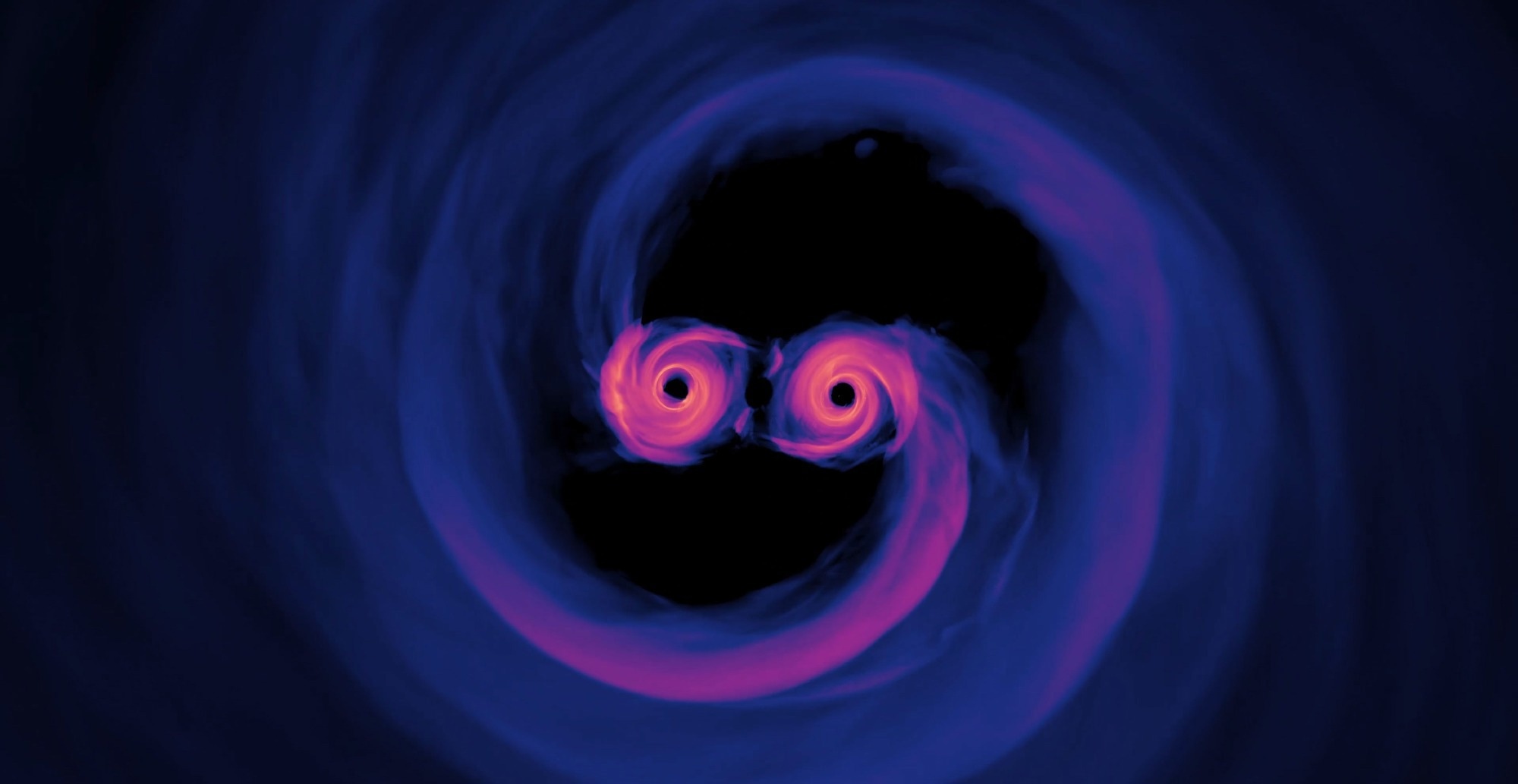The universe is growing. We know this from evidence researchers have provided for around a century. However, the rate that celestial objects are withdrawing from each other remains an unanswered question.
 The gravitational waves emitted by the merger of black holes, when lensed by massive objects as the waves travel toward Earth can be used to calculate the rate at which the universe is expanding. Image Credit: NASA's Goddard Space Flight Center/Scott Noble; simulation data, d'Ascoli et al. 2018
The gravitational waves emitted by the merger of black holes, when lensed by massive objects as the waves travel toward Earth can be used to calculate the rate at which the universe is expanding. Image Credit: NASA's Goddard Space Flight Center/Scott Noble; simulation data, d'Ascoli et al. 2018
It is not a small step to quantify the speed at which objects travel away from each other through massive distances. From the time of the cosmic expansion discovery, its speed has been quantified and re-quantified with increasing precision, with a few of the recent values ranging between 67.4 and 76.5 kilometers per second per megaparsec, relating the recession velocity (in kilometers per second) to the distance (in megaparsecs).
The difference between varied measurements of cosmic expansion is known as the “Hubble tension.” In cosmology, a few of them have named it a crisis. However, it is an exciting time for UC Santa Barbara theoretical astrophysicist Tejaswi Venumadhav Nerella and co-workers at the Tata Institute of Fundamental Research in Bangalore, India, and the Inter-University Center for Astronomy and Astrophysics in Pune, India.
Since the first detection of gravitational waves in 2015, detectors have been considerably enhanced and are poised to produce a rich haul of signals in the future. Nerella and his co-workers have devised an approach to utilize these signals to quantify the expansion of the universe, and maybe aid in settling the argument forever.
A major scientific goal of future detectors is to deliver a comprehensive catalog of gravitational wave events, and this will be a completely novel use of the remarkable dataset.
Tejaswi Venumadhav Nerella, Study Co-Author, University of California, Santa Barbara
The cosmic expansion measurement rate boils down to distance and velocity. Astronomers employ two types of approaches to quantify distances: the first begins with objects with an identified length (“standard rulers”) and look at how huge they look in the sky. Such “objects” are structures in cosmic background radiation or the distribution of galaxies in the universe.
A second class of approaches begins with objects of known luminosity (“standard candles”) and quantifies their distances from Earth with the use of their obvious brightness. Such distances are linked to those of distant bright objects and more, building up a series of measurement schemes frequently known as the “cosmic distance ladder.” By the way, gravitational waves can also aid in quantifying cosmic expansion by themselves, as the energy expelled by the collision of black holes or neutron stars can be employed to measure the distance to such objects.
The approach that Nerella and his co-authors suggest belongs to the second class but employs gravitational lensing. This is an occurrence that happens when huge objects warp spacetime, and twist waves of all types that move near the objects. In rare occurrences, lensing can generate several copies of the identical gravitational wave signal that attain Earth at varied times—the delays between the signals for a group of several imaged events can be employed to quantify the expansion rate of the universe, as per scientists.
We understand very well just how sensitive gravitational wave detectors are, and there are no astrophysical sources of confusion, so we can properly account for what gets into our catalog of events. The new method has sources of error that are complementary to those of existing methods, which makes it a good discriminator.
Tejaswi Venumadhav Nerella, Study Co-Author, University of California, Santa Barbara
The signals’ source would be binary black holes, which are two black holes’ systems that orbit one another and eventually combine, expelling huge quantities of energy in the form of gravitational waves. Researchers have not yet detected strongly lensed examples of such signals, but the forthcoming generation of ground-based detectors is anticipated to have the needed sensitivity level.
“We expect the first observation of lensed gravitational waves in the next few years,” said Parameswaran Ajith, who is the study co-author. Besides, these future detectors need to see more distance into space and sense weaker signals.
The authors expect such sophisticated detectors to begin their search for combining black holes in the coming years. They expect recording signals from a few million black hole pairs, a small fraction (around 10,000) of which will seem numerous times in the same detector owing to gravitational lensing. The Hubble expansion rate is encoded by the delays’ distribution between such repeat appearances.
As per the study lead author Souvik Jana, contrary to other approaches of measurement, this approach does not depend on knowing the accurate locations of, or the distances to, such binary black holes. The only prerequisite is to precisely recognize a considerably huge number of these lensed signals. The scientists add that observations of lensed gravitational waves can also offer hints about other cosmological debates, like the nature of the invisible dark matter that contributes to the huge energy content of the universe.